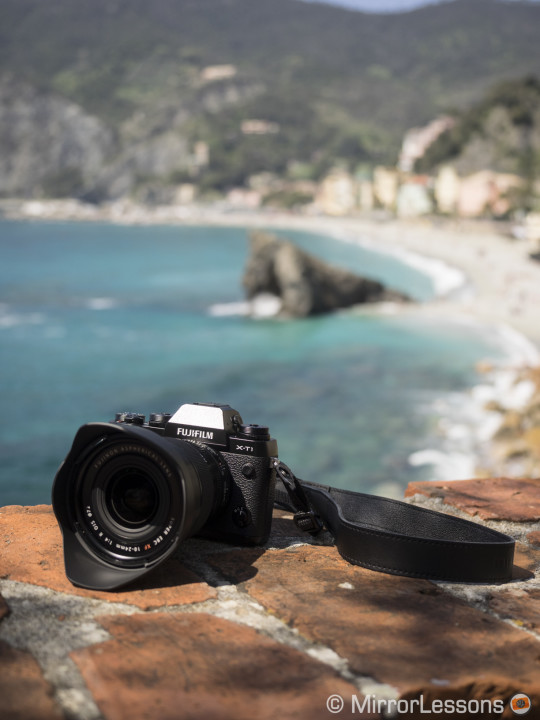Note: in December 2014, Fujifilm released the firmware version 3.00 that adds several new features to the camera including electronic shutter, Classic Chrome picture profile and many other things.
Despite living only three hours away from the Cinque Terre National Park, I had never set foot there before. There isn’t any particular reason except that I was probably waiting for a good excuse to go there, and that happened exactly last week when Heather and I took advantage of the long Easter weekend. Fresh air, long walks and a new camera/lens to accompany us: the perfect combination to escape work and enjoy one of the most unique and beautiful places in Italy.

A unique location, one camera and one lens
The Cinque Terre (literally the “five lands” in Italian) are five small sea villages located along the Italian Riviera in the Liguria region. The coastline and hills that link them are part of the Cinque Terre National Park and the park itself is a UNESCO world heritage site.
The hills are full of vineyards and paths that take you not only to the most well-known villages but also to secondary ones huddled in the hills. One of the characteristics you will appreciate the most is the almost total absence of cars. You have the option of travelling across the lands by train, boat or foot. We chose the latter as we love to walk and it is indeed the best way to discover the area and take photographs. In a matter of minutes, you travel from small colourful villages to massive green hills where you can hear the sound of the sea far away while breathing the fresh air that it brings.

This trip was the perfect opportunity to test the new XF 10-24mm f/4 lens from Fuji. It is actually the only lens I brought with me and I was confident that its focal length range would be enough for most compositions (15-36mm equivalent on 35mm format). I occasionally missed having a longer focal length for certain kinds of landscape shots but overall I can say that this lens is a wonderful companion for travel and landscape photography.
I also brought the Fujifilm X-T1 which is probably the most popular mirrorless camera on the web right now. So many reviews have been written about it. We had the pleasure to try it the day of the official release back in January but we didn’t have the opportunity to take it out on a proper shoot until now.
Note: unless you see OOC JPG, all the pictures were processed in Lightroom 5.4 using the Fuji Camera profiles or the Rebecca Lily Pro Set II.
Riomaggiore, Manarola and Corniglia
Amazing scenery through an amazing viewfinder


Riomaggiore is the village where our hotel was located. It is the last village of the park if you travel north to south. It is one of the most interesting to visit, not only for its main descending street Via Colombo but also for its many secondary small streets that wind up and down the hills.
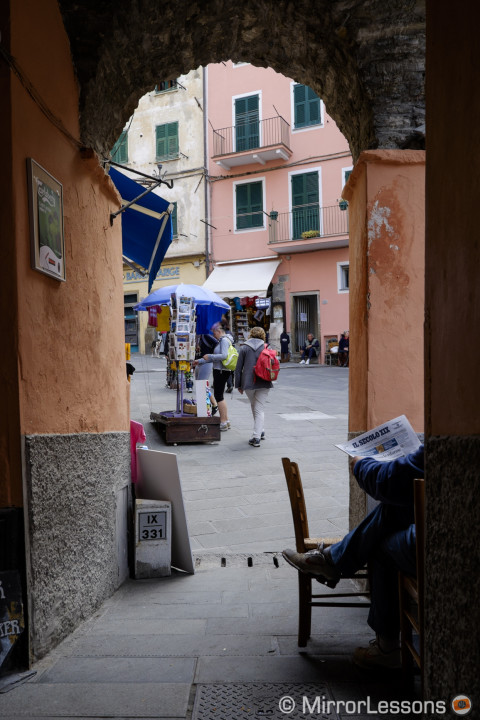


There is also a small wharf that is framed by coloured tower houses and filled with coloured boats. This spot is certainly one of the most photographed of the entire park.


From Riomaggiore we then decided to walk to Manarola, the nearest town. The most known and easiest path called “Via dell’amore” (Love path) that goes along the cost was closed due to floods, landslides and bad weather. Instead we took an alternative path that goes up through the hills and gives you a better chance to see breathtaking views from above. The path is difficult because it goes straight up at almost a 90 degree angle, but it is worth every step.


X-T1, 1/320, f/ 11, ISO 200 – 11.5mm – Velvia (LR 5.4)
X-T1 thought: EVF
After my first look at the Fuji X-T1 in January, I clearly remembered the camera for one thing: its electronic viewfinder. Now that I had the chance to use it again, that feeling was confirmed. The X-T1 does possesses the best EVF to date and it is simply a joy to use. It is even better than the OM-D E-M1 EVF that I use all the time for work and find excellent for most situations.
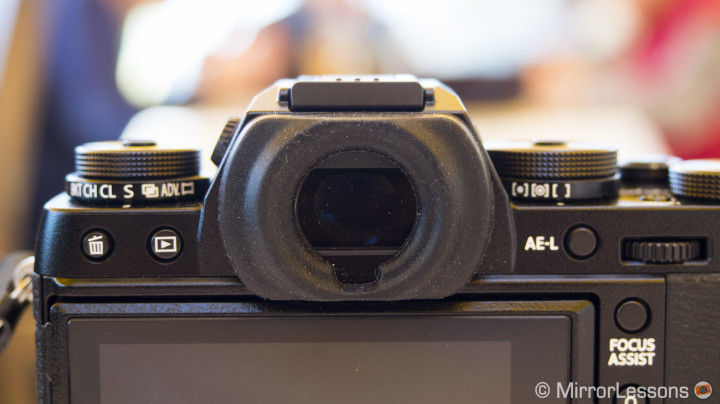
The X-T1 EVF is very sharp (2,360k) but more importantly, it is big (0,77x magnification). To me this aspect is even more important as I always shoot with my glasses. The X-T1 EVF makes things easier for me when it comes to creating a precise composition. In low light there is some noise but the EVF doesn’t reduce the frame rate, another good characteristic. In some situations, I find it lacks a little bit of brightness, so I increased it by two notches in the menu.
To me, the EVF is certainly one of the major selling points of the X-T1, especially for someone coming from DSLRs and optical viewfinders.

X-T1, 1/210, f/ 5.6, ISO 200 – 11.5mm – Velvia (LR 5.4)
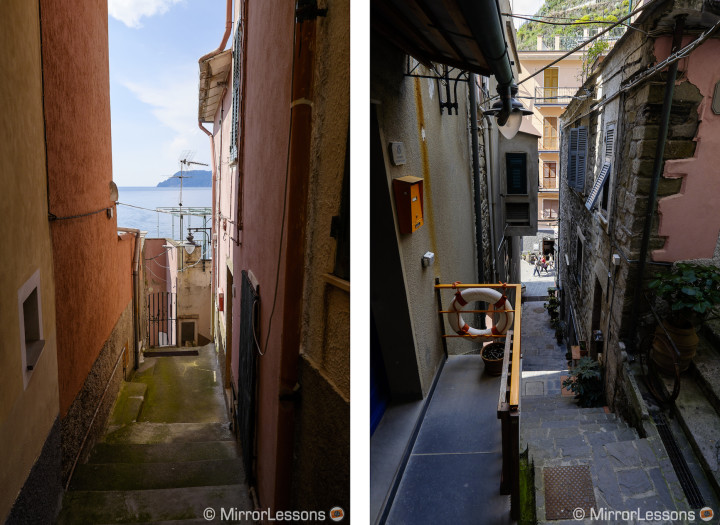
X-T1, 1/150, f/ 5, ISO 200 – 12.6mm – Astia (LR 5.4)
After spending some time in Manarola, the oldest town of the Cinque Terre, and refreshing ourselves, we took the second path to Corniglia, which is a little bit longer than the first but offers an amazing view of Manarola from above.
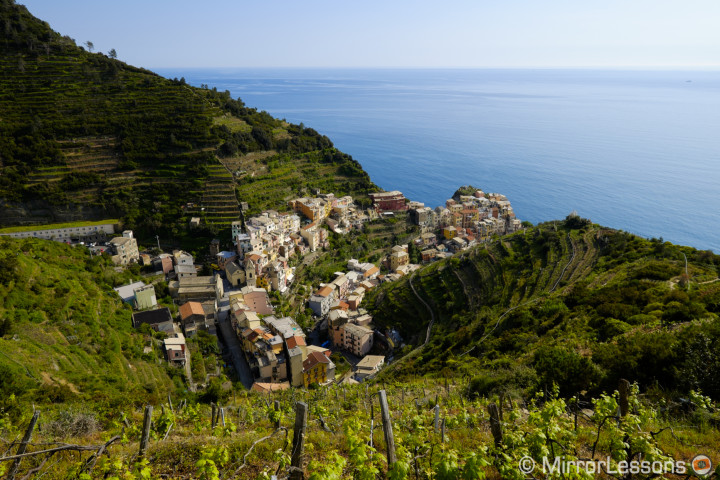
Once again, vineyards were the main characteristic of the scenery up until we passed through the small secondary village of Volastra and entered the woods.

X-T1, 1/1000, f/ 8, ISO 200 – 17.5mm – RL Russet III

We arrived in Corniglia at around 7pm. We stopped there for dinner before gathering some additional blue hour shots and then took the train back to Riomaggiore.


X-T1, 1/30, f/ 4, ISO 800 – 16mm – Astia (LR 5.4)
X-T1 thought: ergonomics
While walking, I was also gaining confidence with the X-T1 ergonomics and its dials/button layout. The grip of the camera is very good, probably the best X camera for this. I particularly like the thumb grip on the back as it gives you a very sturdy hold on the camera.
There are plenty of customisable buttons including the arrow pad, which is a good thing. It is true that some of them are small and more difficult to access during shooting operations, but overall I didn’t find this irritating. I also like the custom button on the front, where I set the Auto ISO option. Finally, a nice tip was suggested by Dpreview and that is to assign the focus area to each of the 4 arrow pad buttons. That way, when you want to move the AF point, you just press the button according to the direction you want it to move. Smart and very simple. You won’t need it for landscape shots but for portraits or action shots it could be very effective.
The X-T1 is a very comfortable camera to hold and use for several consecutive days.
Before going back to the hotel, we spent a few moments taking night shots in Riomaggiore. I used my Cosyspeed Camslinger 160 bag as a support for the camera since I didn’t have a tripod with me. I also tried the Fujifilm Cam Remote app with my iPhone to control the camera over wifi. It is probably the most straight forward app I’ve seen for this kind of function. The only thing it’s missing is the ability for it to take Bulb Time shots. Instead of keeping the finger on the shutter button, it would be great to open and close the shutter via the app on the smartphone.

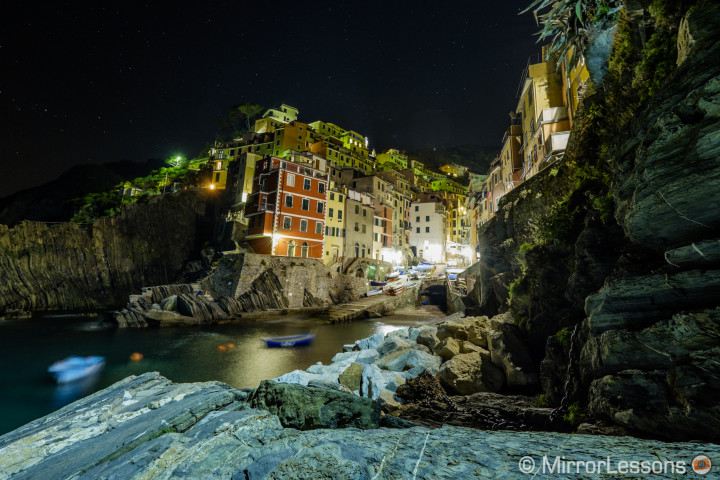
Monterosso and Vernazza
The pleasure to shoot in full manual mode
The second day, we decided to go by train to Monterosso, which is the farthest village from our Hotel, and then walk back to Corniglia again (the middle village). Monterosso is the least interesting of the five towns. It is more touristic, your classic beach town.

X-T1, 1/500, f/ 10, ISO 200 – 21mm – Velvia (LR 5.4)

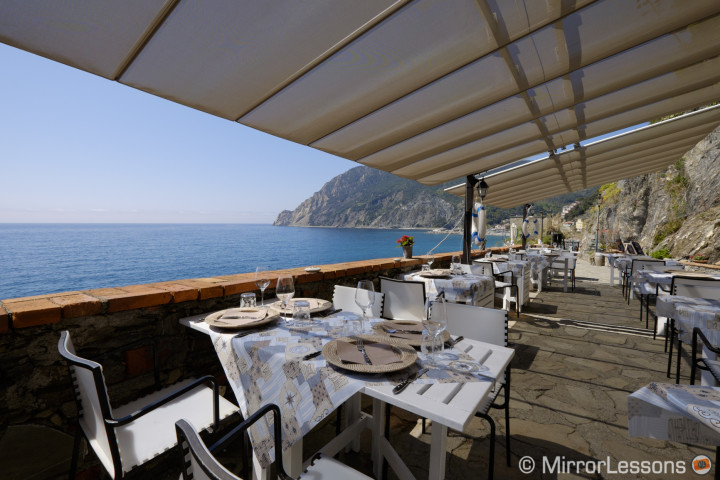
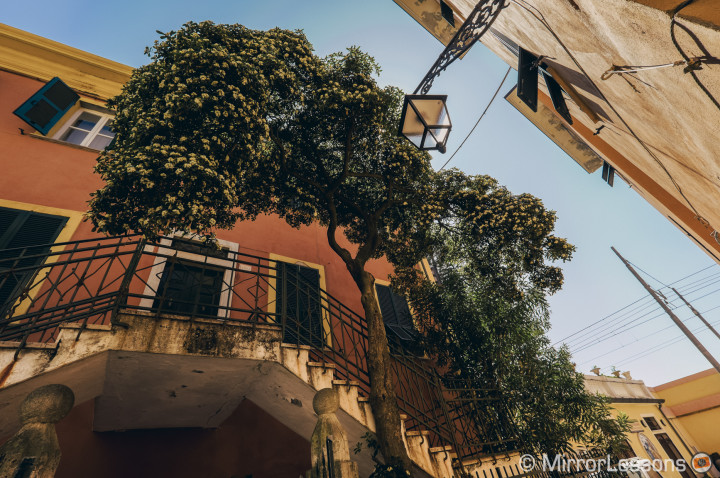
After a delicious fish lunch, we started the first walk of the day to Vernazza, one of the most enchanting towns. During the walk some clouds moved in, making the light less intense but not less interesting as it created a more dramatic effect.


X-T1 thought: Dials
Honestly I didn’t find all the dials on the X-T1 essential. I guess it depends on how a photographer works.
Me, I mainly shoot in aperture priority mode, keeping the ISO to 200 or setting it to auto with a highest value limit and working with the exposure compensation. As such I could easily work without the ISO or shutter speed dial.
Also, I like to compose and adjust the settings while looking at my composition through the viewfinder, but I actually find some of these dials not as comfortable as they could be, especially concerning their smoothness. I guess it is a question of adaptation and time as with every camera.

To really explore all the benefits of the X-T1, I decided to shoot full manual only. The dials are great when you preset the values before taking the shot because you are looking at the dials, or if you remember which settings you have, you can even turn the dials without looking at them and concentrate on your scene. Then once you find the decisive moment, you just have to aim and take the shot.
One of the most useful dials I found is the shooting mode subdial: I can very easily and quickly change to bracketing mode for HDR. This action is definitely quicker on the X-T1 than with any other camera.
The camera’s retro SLR look is certainly pleasant to the eye but all these dials are truly functional only if you shoot in full manual mode. And from a certain point of view, this totally makes sense.

Vernazza is Heather’s and my favourite place. The view of the town is amazing from the final part of the walk. It also appears to be the most colourful village of them all.

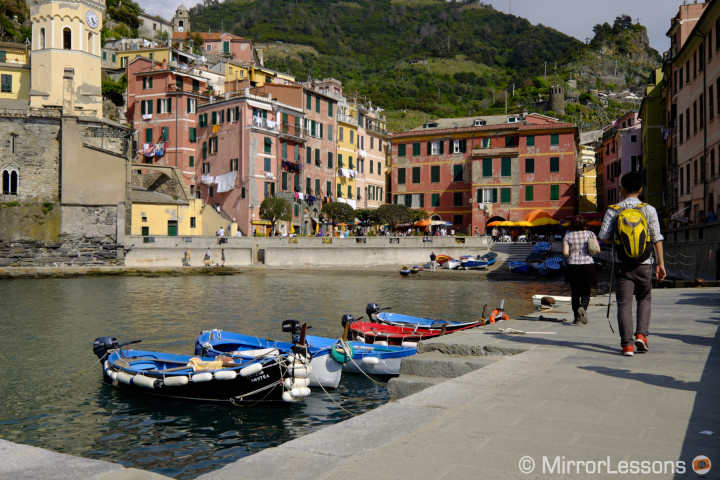
It is also the most crowded of the five as tourists seems to flock here more than other places. We stopped for a “granita” (Italian slushy), some water and went down to the bay on front. Then we decided to leave the busy streets and look for smaller and more intriguing alleyways.
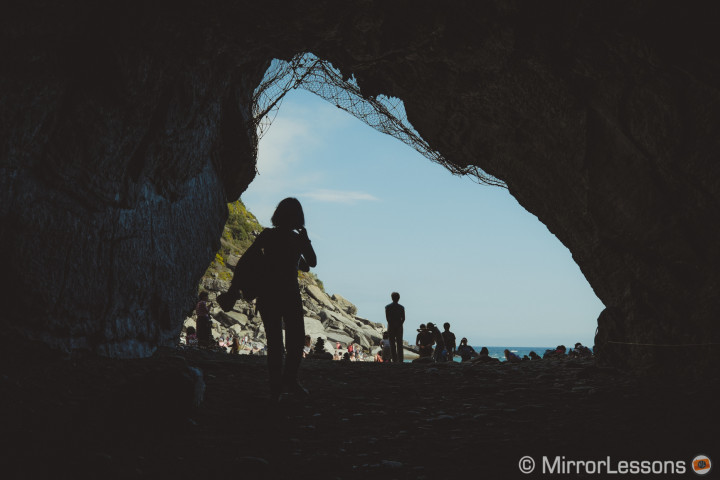

X-T1, 1/60, f/ 11, ISO 200 – 10mm – Astia (LR 5.4)
XF 10-24mm thought
Wide-angle lenses are fascinating but also difficult to use, as you really need to find an interesting composition to make that short focal length worth. My first impressions of the new 10-24mm are very positive and I think that the pictures speak for themselves.
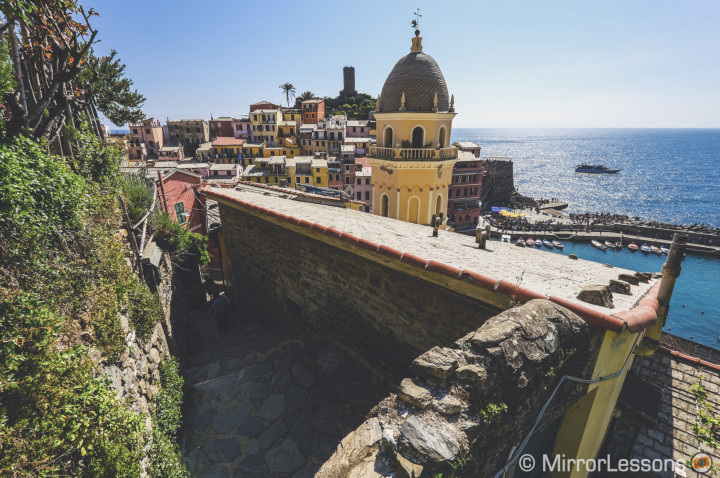
It covers an interesting focal length, distortion is very good considering the extreme wide angle, and it is very sharp throughout all the apertures, even at the corners which makes it interesting not only for landscapes but also architectural shots.

It doesn’t seem to suffer from any particular lens flare and handles backlight like a pro! I will fully review the lens in the weeks to come but so far I am very impressed and feel that this might be one of the best lenses by Fuji, probably the best zoom lens. The optical stabilisation is also very effective – I could easily take picture at 1/4 of a second.

The f/4 constant aperture could be the only small limit of this lens but I’ll be honest, during these three days I never felt the need to open up to f/2.8. Also, the lens has a certain volume, but isn’t heavy which makes the combo bigger but not heavier.
The quality of the XF 10-24mm was certainly the most positive surprise of our three-day trip with this Fuji combo.
From Vernazza, we walked back to Corniglia. Leaving the town, there was another interesting view where the backlight lent itself to some black and white photography.

The walk was pleasant, even though some clouds had drifted in once again, killing the light that would have bathed the village when I was close enough for a beautiful composition. I could have waited a little longer to see if the sky would clear but we also wanted to walk from Corniglia to Manarola and get there before dark.

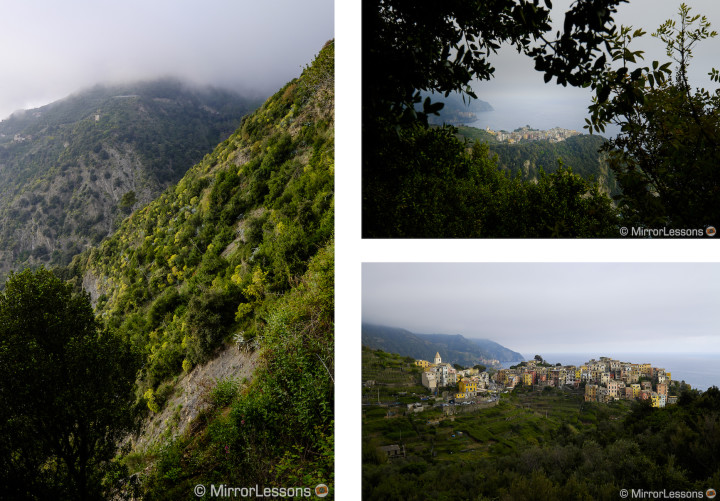
X-T1, 1/180, f/ 8, ISO 200 – 24mm – Velvia (LR 5.4)
X-T1, 1/160, f/ 8, ISO 200 – 24mm – Astia (LR 5.4)

X-T1, 1/60, f/ 5.6, ISO 200 – 14mm – Astia (LR 5.4)
X-T1, 1/180, f/ 8, ISO 200 – 24mm – Velvia (LR 5.4)
In the end, we continued our walk, only to discover one kilometre later that the path to Manarola was closed. What a shame. Out of breath, we ran back to take the train and journeyed back to Riomaggiore.


Back in Riomaggiore, I was able to catch the last rays of light at the wharf. Despite my exhaustion after such a long day, I wouldn’t have forgiven myself if I’d wasted the chance to capture such a beautiful sunset on our last night in the Cinque Terre.

X-T1 thought: battery life
Before going to the Cinque Terre, I purchased a second battery. Not an original Fuji battery but a third party battery made by Patona, a German brand known to make batteries that are just as good as the original. I bought two for the Sony A7 and they last as long as the original Sony battery. The X-T1 version (NP-W126) lasts less than the original but for 20€, I’m glad I bought it because the original battery doesn’t last an entire day. So a second battery is strongly advised if you are out shooting all day. Not very surprising as it is the same story for most mirrorless cameras (with the exception of the Panasonic GH3).
Portovenere and back home
First impressions of the Fuji X-T1

On Friday, we stepped outside the Cinque Terre and went to Portovenere, which is a 30 minutes drive away. It is also part of the UNESCO world heritage site. The place is more touristic and in my opinion less fascinating. One of main characteristics is the Byron’s Grotto with St. Peter’s church on top. We stayed there for a little while, had a (very bad) lunch and then drove back home.
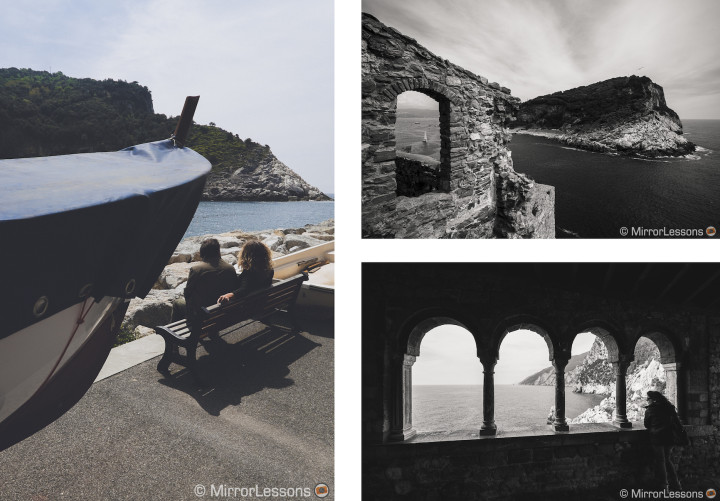
X-T1, 1/1000, f/ 8, ISO 200 – 10mm – RL Ebony I
X-T1, 1/250, f/ 8, ISO 200 – 10mm – RL Ebony II
Of course there are many more interesting things to cover regarding the X-T1 and 10-24mm but the good news is that I have both for an unlimited period of time (meaning we bought it, LOL) so I will try to test other aspects as soon as possible as well. Autofocus will be one of them along with continuos shooting capability. It worked fine during these three days with the 10-24mm, with almost no hesitation whatsoever. I really appreciate the progress that Fuji has made in this direction.
The X-T1 seems to be the most mature camera Fujifilm has ever produced.
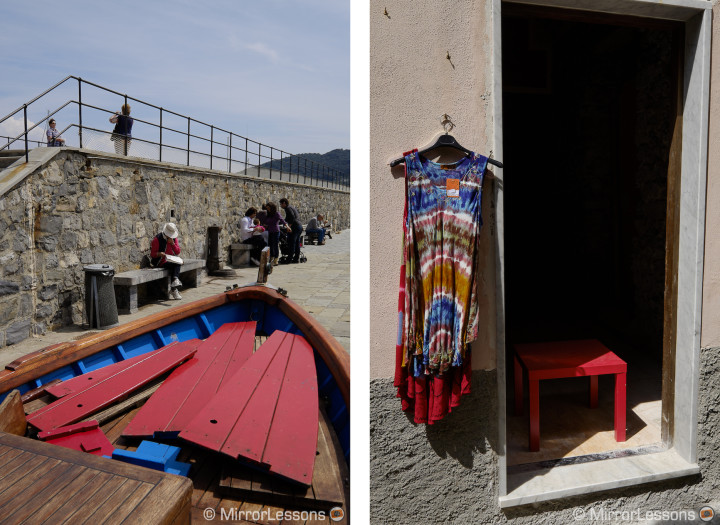
X-T1, 1/500, f/ 8, ISO 200 – 24mm – Astia (LR 5.4)
